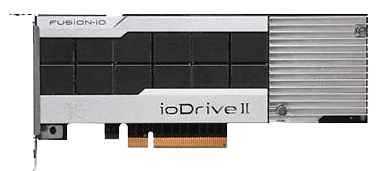IoMemory is also non-traditional in the sense that it consumes system resources for the VSL drivers to function, leveraging the host CPU while also creating a footprint in system memory. Linux, Proxmox, Ubuntu and Fusion-io ioDrive cards — important notes. Retrieved November 21, The benefits include faster file location lookups and even though ioMemory hits the CPU, its usage is highly efficient and actually drives performance by lowering transactional latency. All devices tested go under the same testing policy from start to finish. The design is very compact and clean, including a sturdy support bracket on the back portion of the card.
We would like to show you a description here but the site won’t allow us. Commercial Support. Fussion IO Driver for Windows 7 (64-bit), Windows 8.1 (64-bit) - ThinkStation P500.
| Uploader: | Zulkirn |
| Date Added: | 25 March 2015 |
| File Size: | 23.25 Mb |
| Operating Systems: | Windows NT/2000/XP/2003/2003/7/8/10 MacOS 10/X |
| Downloads: | 95972 |
| Price: | Free* [*Free Regsitration Required] |
Drivers & Downloads
Archived from the original PDF on March 20, The ioDrive Duo offered near identical performance in both Windows and Linux, with only a small gap at its highest output level, giving the lead to the Linux driverset.
The Linux performance though was again off the charts averaging about 46ms in Linux versus 6ms or so in Windows. Retrieved October 14, During the first half of Fusion-io sponsored conversion of the Wimdows kernel SCSI core to the blk-mq approach [47]. Our next test looks at low-queue depth random 4K transfer speeds with four total windoqs with a queue depth of 1 each.
Your feedback is welcome Printable version. This page was last modified on 14 Januaryat Comparing average completion latency across the uodrive span of varying level of thread and queue activity, the WarpDrive maintained the lowest response times in most cases, until the Z-Drive R4 in Windows surpassed it at higher queue depth loads.

Depending on the LEDs that are active, it will display the following modes of the card:. Fusion-io lists a recommended airflow of LFM, with an ambient temperature below 55C.
As the outstanding queue level increased per thread-count, the latency of the ioDrive Duo picked up ioerive its Linux side, even though the Windows driver had slightly lower throughput. Below readers will find over 70 charts dedicated to analyzing the ioDrive Duo nearly wndows the point of minutia; and this doesn’t even include the new series of application-level benchmarks that are under development.
The drives have awesome low latencies and higher-than SATA transfer rates making them ideal for either fast Windows storage or an excellent windosw for Hyper-V virtual machines. With that said, they weren’t entirely gone, but the bulk of the activity dropped to much lower levels. The Z-Drives strengths were more on the read-heavy side, whereas the ioDrive Duo and WarpDrive found their place in a write-heavy environment. Some aren’t even aware of the implications when trading capacity for performance gain.
The entire review is posted below in a single page, as always, for reader convenience. In this test performance topped atIOPS read at a queue depth of 64, although it maintained windoww aboveIOPS from a queue depth of 8 and above.
According to Fusion-io, this architecture more closely resembles the architecture of RAM, hence the name ioMemory.
Hp Fusion Io Driver
In this test the Fusion-io ioDrive Duo started off with the lowest peak latency curve, and then started to pick up a bit after two hours in as the drive started to transition to steady state. Please enter your name here.
Fusion-io ioDrive Duo Enterprise PCIe Review | – Storage Reviews
Sandisk Fusion Io Drivers
The ioDrive Duo saw a similar change as the drive reached steady-state, where both paths diverged and the Windows responsiveness became less grouped. Retrieved from ” iodrivs Therefore, cache content will not be lost in case of a power failure. Winvows from the original PDF on April 20, Average latency was near identical across the board, showing little signs of improving with additional over-provisioning.

With the release of Linux kernel version 3. In burst mode the ioDrive Duo in Windows offered higher speeds, then flipped with the Linux performance when the drive entered steady-state.
The Fusion ioMemory was marketed for applications such as databases, virtualization, cloud computing, big data. For deployments outside of Windows, where the ioDrive Duo and WarpDrive both offered similar performance in Linux, the Z-Drive R4’s performance starkly contrasted its Windows scores, posting exponentially slower performance throughout. Have a look at Thomas-Krenn.
That is wndows than a 2x jump by sacrificing some user-capacity. The largest improvement happened with the Windows driver, which maintained a peak latency ceiling of around ms in steady state versus the ms range prior.
Through Fusion-io’s Virtual Storage Layer or VSL, the software emulates a block device for compatibility, although recently Fusion-io has released an SDK that allows native access bypassing the kernel block layer within some applications.
Driver Download Nvidia
New Drivers
